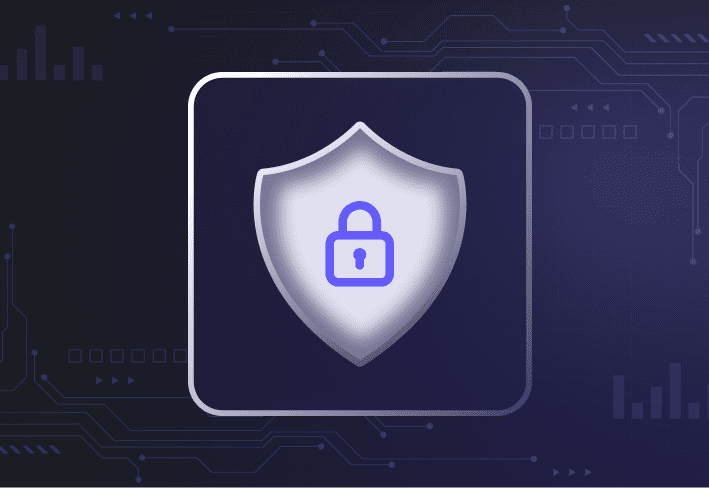Going from reactive to proactive IT support is often a gradual (and sometimes frustratingly non-linear) process. Besides careful planning and scoring strategic victories, you also need to convince higher-ups that IT has a direct impact on business outcomes.
That can seem overwhelming, but not if you take an incremental approach. And the returns are worth it: greater productivity, better user relationships, and less burnout, just to name a few. (Maybe even that elusive vacation you never seem to take?) But first, we’ll walk you through some useful tips on how to become a proactive IT department.
1. Get management support
Winning over leadership executives and changing their perception of IT is half the battle won. To earn their trust, start with small but strategic initiatives that demonstrate value and measurable success. The good news is that more companies are increasing their IT spending and investing in technology that ties in with business outcomes.
2. Identify key focus areas
The scope of IT work is broad and complex, and trying to do everything all at once is not going to yield the results you want. Instead, focus on a few key areas that you have the expertise and capabilities to commit to. You can also narrow it down by identifying what other departments, like sales or business development, need to operate more effectively.
3. Develop a roadmap
Once you’ve locked down your focus areas, the next step is to map out your budget, execution plan, goals, and success metrics. This enables you to stay organized as you manage day-to-day support services alongside larger projects. It’s especially crucial to track and measure success, which can be quantified by changes in uptime, revenue, productivity (in terms of dollar value), or employee sentiment.
4. Use the right tools
To be successful and sustainable, proactive IT support requires the right tools to streamline processes and maximize efficiency. Examples range from remote monitoring and management software to easy-to-use computer imaging tools like SmartDeploy. With more organizations switching to remote or hybrid work, being able to centrally manage endpoints and provide proactive support to users from anywhere is essential.
5. Set up clear processes and documentation
Establish clear, intuitive processes and workflows that enable the team to operate in a logical and consistent manner. For repetitive tasks or those that are prone to human error, “script that s**t” is the advice from one Reddit user. Self-help documentation around common user issues also reduces the dependency on IT, freeing up the team to work on more critical projects.
6. Communicate!
Communication plays a vital role in building relationships, getting buy-in for new initiatives, and conveying the value of IT to the organization. Rather than communicating only when something goes wrong, communicate IT’s wins. Proactive IT management includes communication strategies to foster collaboration, strengthen engagement, and change the way your company views IT.
7. Stay on top of cybersecurity
Know your IT infrastructure and environment so that you can better anticipate potential issues, cybersecurity gaps, and vulnerabilities. Keep endpoints secure against cyberattacks by patching and updating software regularly, using quality antivirus software, and actively cultivating a strong security-minded culture within the organization.
What are the benefits of proactive IT?
For organizations and teams, taking a proactive approach to IT has many advantages. Besides greater cost efficiencies, it’s good for users, good for team morale, and good for business in the long run.
Cost savings
By taking measures to prevent issues, proactive IT management reduces the risks and hefty costs of security breaches and unplanned downtime. This can help to keep IT costs predictable, enabling companies to plan and utilize their budgets more strategically on technology and initiatives that have a greater impact.
Improved user productivity
Proactive IT support is about catching and resolving small issues before they turn into larger ones that cause more serious disruptions. Paired with backup and disaster recovery procedures and software tools to streamline break-fix resolution, it helps reduce user downtime and keeps them productive for longer.
Improved security
When it comes to security threats, just like the flu, prevention is better than cure. Proactive IT support typically involves diligent security monitoring and regular efforts to keep endpoints secure, patched, and updated, ensuring that the entire digital ecosystem is well protected.
Better user relationships
Proactive IT management leads to less frustration, happier users, and better relationships all around. That’s because well-managed systems run more smoothly, experience fewer issues, and are less likely to cause unexpected disruptions to users. Communicating tasks like scheduled downtime in advance also allows users to plan their work accordingly while IT admins do their thing.
Less burnout
IT admin roles are notorious for long hours and intense workloads. Constant firefighting and reactive IT management add to the stress, which often results in burnout and attrition. This could change if organizations invested more in supporting and empowering their IT teams with the resources they need to perform their job efficiently and thrive.
New business opportunities
Well-run and well-resourced IT departments are likely to have more bandwidth to explore new areas of work or initiatives that could turn into business opportunities down the road. If you transform IT from a reactive to a proactive function, you empower them to drive product innovation and improve the customer experience — and that directly impacts business growth and profit.
FAQs on proactive IT practices
What’s the difference between reactive and proactive IT?
Reactive IT support primarily focuses on fixing problems when they happen, going by the philosophy of “if it ain’t broke, don’t fix it.”
Proactive IT, on the other hand, looks at preventing problems before they occur. By preempting a potential issue that could cause system failure, for instance, you avoid a cyber disaster. Instead of grappling with a crisis, you can focus on making actual improvements to enhance user and customer experiences.
It’s a common IT myth that IT teams are always reactive, never proactive. Not true. It takes conscious effort, but practicing proactive IT can give you and your team more breathing room, reduce stress, and increase your chances of an uninterrupted lunch break (at least on most days).
What do proactive IT operations mean?
Running proactive IT operations is about staying ahead of issues by following common best practices and putting the right measures in place to keep your organization secure and productive.
Device management
When managing devices across their lifecycle, proactive IT practices like computer imaging and regular patch management can go a long way in maintaining endpoint security and performance.
Monitoring
Keeping a constant eye on user activity as well as what comes through your corporate networks and systems enables you to spot any gaps and anomalies long before a breach occurs.
Security and compliance
Proactive IT teams take a zero-trust approach to cybersecurity. (There’s a reason why we’re an inherently cynical, suspicious bunch.) Besides constant monitoring, it’s also good practice to test your environment and conduct security training regularly.
Data backup
Data backups are like health insurance policies: They’re important even if you never encounter a serious incident. Whether you use local or cloud storage, proactively backing up critical data ensures business continuity at all times.
If you’re looking for ways you and your team can be more proactive, tools like SmartDeploy let you streamline day-to-day IT support tasks so that you can focus on more high-impact work. You can easily image computers, simplify driver management, and push out software updates — from a single dashboard. And you can support users wherever they are, whether on-site or remote.
Learn more in our weekly demo or sign up for a free 15-day trial to see how you can tackle a range of IT management tasks — and be home in time for dinner.



